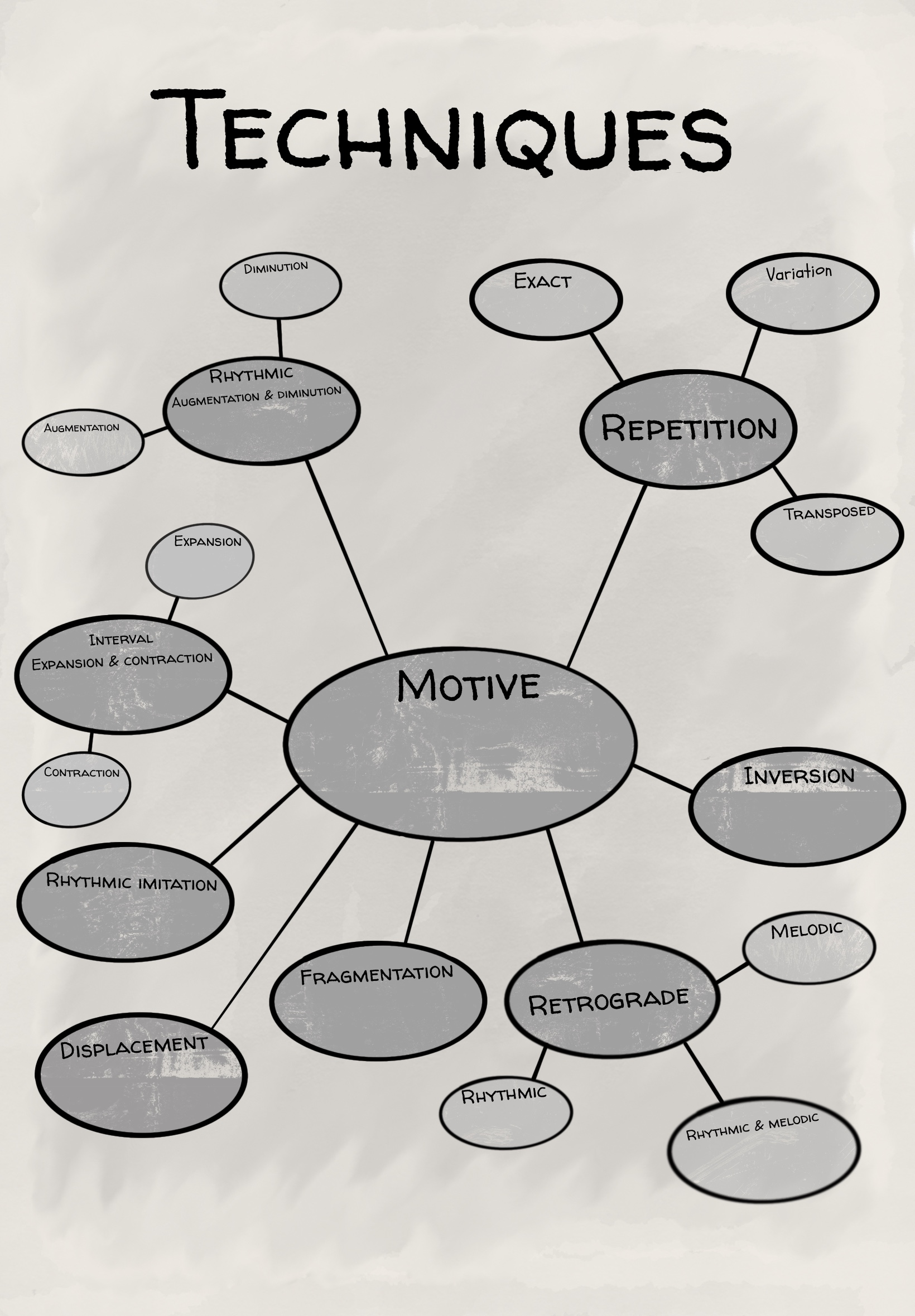2. Stephen Nachmanovitch, Free Play: the Power of Improvisation in Life and the Arts (Bo Ejeby Förlag,1990), 83-85.
3. Gordon Delamont, Modern Melodic Technique (Kendor Music Inc, 1976), 33-39.
4. Hal Crook, How to Improvise (advance music GmbH, 2001), 88.
My aim with this work is to investigate how different motivic development techniques, used in composition, can be used while improvising in a melodic jazz context.
- How can motivic development be used as a foundation for me as an improvising musician?
- How can different techniques be used to create a structure while improvising?
- How can I use motivic development to incorporate thematic material from the composition into my improvisations?
I want to look at how different techniques works while I am improvising and how previous composers and improvisers have applied them in their music. I want to use composition as a way for me to expand my understanding of the techniques. Motivic development is used in a very structured way when used in composition compared to when improvising. So, I want to create a more structured use of motivic development for myself. Use these techniques as a steppingstone for learning new musical concepts and to develop as a musician, composer and improviser.
Method
When doing this master thesis, I have used my practice and experimentation with the techniques together my own reflections together with books, texts and transcriptions of both myself and others improvising. I gathered techniques that I have found commonly used in composition. I used these techniques to compose, practicing improvising and analyzing. I began by doing a mapping of the techniques where I compiled all the techniques with different subheadings.
This master thesis was the investigation of motivic development with these eight techniques as rules and limitations for improvising. Stephen Nachmanovitch describes in his book Free Play, the rules and limitations as something to work with rather than against. That we should see these disciplines as something that sparks creativity. They create structures that brings out spontaneity and a hint of a form gives the improvisation a direction. To follow rules and limitations frees the music and gives it depth and a force that otherwise would be unattainable.2 My intension was to get to know one techniques at the time to create a structured toolbox with techniques to chosen from.
I wanted to use the process of composing to come up with ideas using the different techniques. That gave me time to think and edit the ideas while at the same time create a repertoire for myself. In the practice sessions I isolated one technique and forced myself to only use that when practicing. I needed to organize the techniques so that I always knew what I was practicing. I wrote my own motives so I could approach different techniques and investigate their different possibilities.
These are the main 8 techniques I have used:
Repetition – I repeat the original motive a) Exact b) with variation, either rhythmic or melodic or both c) transposed, diatonically or to other diatonic material.
Retrograde – I repeat the original motive backwards a) using the same rhythm but the notes are played backwards b) I use the same notes and play the rhythm backwards c) I play both the rhythm and the notes backwards.
Inversion – I repeat the original motive, but the notes are mirrored, a major third up becomes a major third down and a fifth down becomes a fifth up, compared to the original motive. It could be a) diatonic and follow the steps of the scale when mirrored or b) Real – the inversion is an exact mirror image of the original motive.
Rhythmic augmentation and diminution – the notes in the original motive is repeated with longer or shorter notes values.
Interval expansion and contraction – the intervals in the original motive is repeated but are larger or smaller.
Rhythmic imitation – the original motives rhythm is repeated, the melodic content here is not important.
Fragmentation – a part of the original motive is developed. The fragment can be developed by all the techniques mentioned.3
Displacement – the developed motive is being moved and occurs in another place of the measure compared to the original. It can be applied on all the techniques mentioned.4
